MARIANI’S
Virtual
Gourmet
April 21,
2019
NEWSLETTER
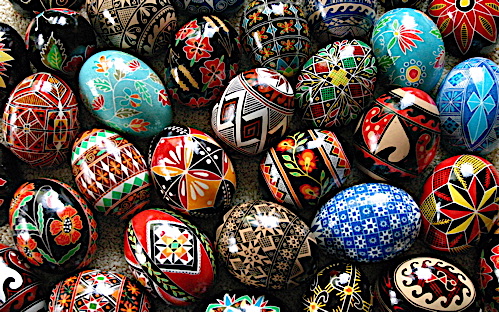
❖❖❖
IN THIS ISSUE
EATING IN THE VINEYARDS
OF VIRGINIA
By John Mariani
NEW YORK CORNER
BENOIT
By John Mariani
NOTES FROM THE WINE CELLAR
By John Mariani
❖❖❖
EATING IN THE VINEYARDS
OF VIRGINIA
By John Mariani
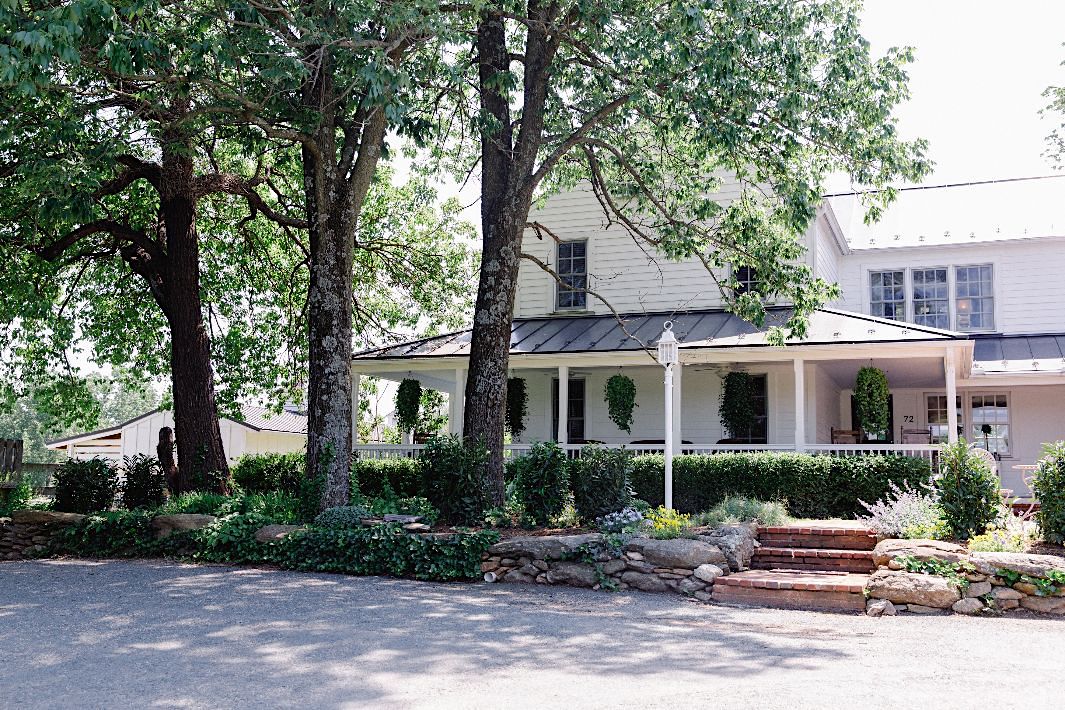
Veritas Vineyards Farmhouse Inn
It’s been fifty years
since a Richmond ad agency came up with one of
the most enduring and endearing of state
mottoes—“Virginia Is For Lovers”—a sentiment my
wife and I learned was very true for anyone open
to the varied beauty of the Blue Ridge
Mountains, Shenandoah Valley and the Chesapeake
Bay.
Back in the Bicentennial Year
of 1976, we drove throughout the state, using as
our guide the popular Country Inns
and Backroads by Norman T. Simpson, staying
at enchanting, historic places like the Graves
Mountain Lodge in Syria, the Hollymead Inn (now
the Silver Thatch Inn) in Charlottesville and the
Wayside Inn in Middletown, and eating at
picturesque restaurants like the Half Way House in
North Chesterfield—all of them still going strong.
So I had a strong sense of
romantic nostalgia this winter when I visited
wineries in Virginia to find that two of the best
also have inns with restaurants that far exceed
anything in the state in the 1970s.
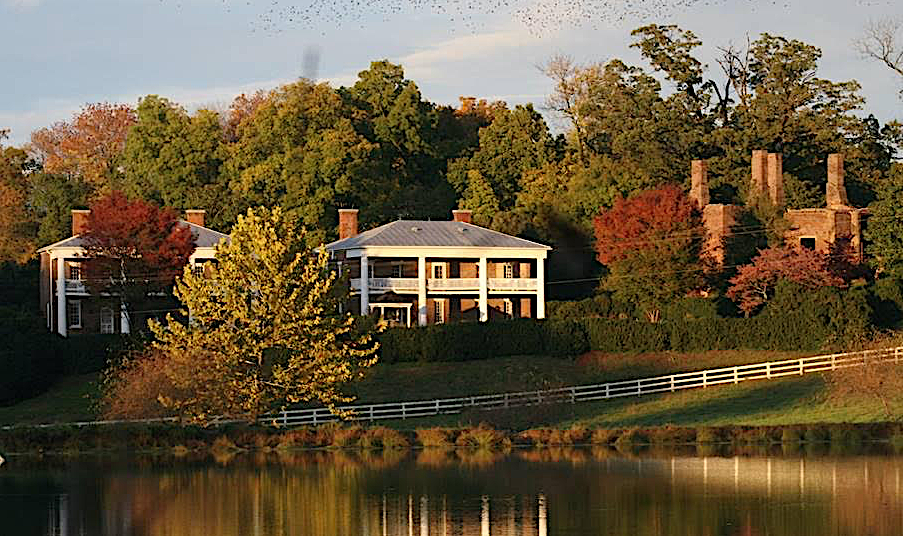 THE
1804 INN
THE
1804 INN
Barboursville Vineyards
17475 Mansion Road
Barboursville, VA
540-832-5384
Set at this distinguished
wine estate, the 1804 Inn has three luxurious and
quiet suites, along with the Vineyard Cottage with
two bedrooms, and the Sangiovese Cottage, each
individually decorated, with all modern amenities
and fine antique décor. One of the suites, named
the Malvaxia, is decorated  with
Poussin and Piranesi prints, a fireplace, chintz
curtains and a 45-foot private balcony. The Philèo
Suite is done with a gallery of game birds,
kiln-baked brick floors and Adirondack chairs.
with
Poussin and Piranesi prints, a fireplace, chintz
curtains and a 45-foot private balcony. The Philèo
Suite is done with a gallery of game birds,
kiln-baked brick floors and Adirondack chairs.
There is a fine restaurant on
premises called Palladio, named after the 16th
century Renaissance architect who had a great
influence on Virginia’s Thomas Jefferson. The menu
is northern Italian, overseen by Chef Spencer
Crawford, who likes to blend local ingredients
with 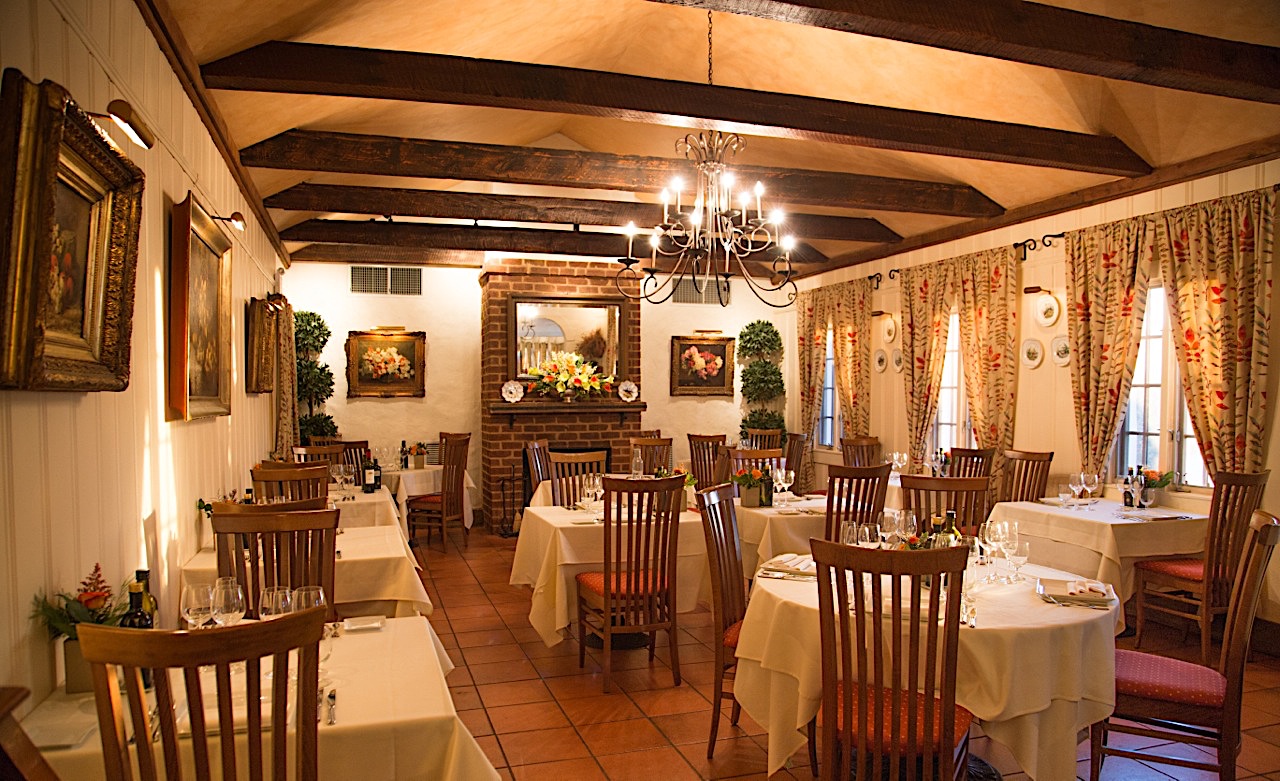 classic
Italian dishes. My recent lunch began with an
antipasto of Parmigiano custard with winter squash
puree, radicchio and apple slaw, followed by
housemade ravioli filled with ricotta and
cauliflower with a touch of thyme and slices of
pancetta ham made from Berkshire pigs. The main
course was a Black Angus hanger steak that had
marvelous flavor and chew, with sauteed
broccolini, smoked potato puree and a demiglace
made from the estate’s Octagon wine.
classic
Italian dishes. My recent lunch began with an
antipasto of Parmigiano custard with winter squash
puree, radicchio and apple slaw, followed by
housemade ravioli filled with ricotta and
cauliflower with a touch of thyme and slices of
pancetta ham made from Berkshire pigs. The main
course was a Black Angus hanger steak that had
marvelous flavor and chew, with sauteed
broccolini, smoked potato puree and a demiglace
made from the estate’s Octagon wine.
The wine list contains only
those of the Barboursville estate, with a few from
the Zonin library, collected by the wonderfully
named sommelier Alessandro Medici.
A
two-course lunch is $46, with wines $56; three
courses $53 and $68; four courses $60 and $80.
The three-course dinner is $75 and $105 four
courses $90 and $125.
THE
FARMHOUSE AT VERITAS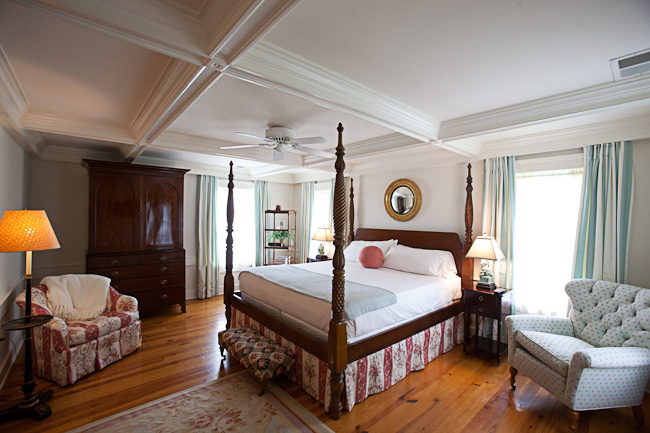
Veritas Vineyards
72 Saddleback Farm
Afton, Virginia
540-456-8100
The Farmhouse was
built in 1839 and remained a family home until
2012, when it was turned into a restaurant and
small inn composed of eight rooms that overlook
the 50 acres of Veritas Vineyards (see wine
article below). Each room is beautifully
decorated in a period style, some with poster
beds, one on two levels with sitting room, one
with a queen-size sleigh bed, walk-in closets and
ceiling fans. The adjacent Barn Cottage has two
bedrooms and baths, full kitchen and porch.
Breakfast is included.
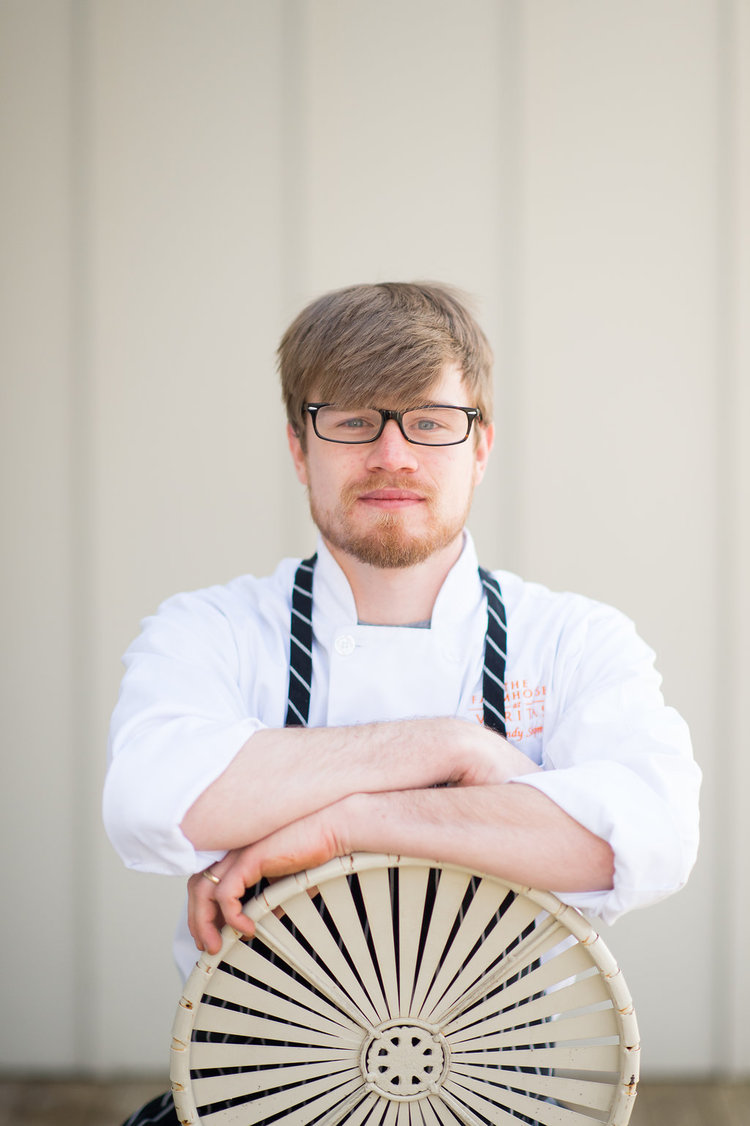 Dinners are
offered Tuesday through Saturday as four-course meals paired
with wines prepared by Chef Andy Shipman (left), who
draws as much fodder as he can from the estate’s
greenhouse and nearby farms.
Dinners are
offered Tuesday through Saturday as four-course meals paired
with wines prepared by Chef Andy Shipman (left), who
draws as much fodder as he can from the estate’s
greenhouse and nearby farms.
Dinner
is served in a lovely room softly lighted with
candles. In late February my meal consisted of a
rich foie gras torchon
with old-fashioned salt-risen bread, citrus
kombucha tea and a red wine vinegar. Shipman
makes a fine, clear, well-reduced chicken consommé
with chicken sausage, carrot noodles, celery,
chicken skin and herbs. A third course was a 7
Hills strip steak with maitakes,
red potatoes, butter made with preserved ramps, a
spike of horseradish and a caramelized crème
fraîche. Ending off the meal was a crispy
chocolate crèmeux
with caramel-orange glaze, shortbread crust, mint
crumble, pomegranate and cream. In each dish you
sense the kind of sophisticated technique Shipman
has acquired and put to good use with Middle
Atlantic ingredients and paired wines throughout.
In spring and summer you can
dine outside on the patio, with dinners preceded by a
glass of sparkling wine.
Dinner is $85 per
person.
❖❖❖
By John Mariani
Photos: Pierre Monetta
60 West 55th Street (near Sixth Avenue)
646-943-7373
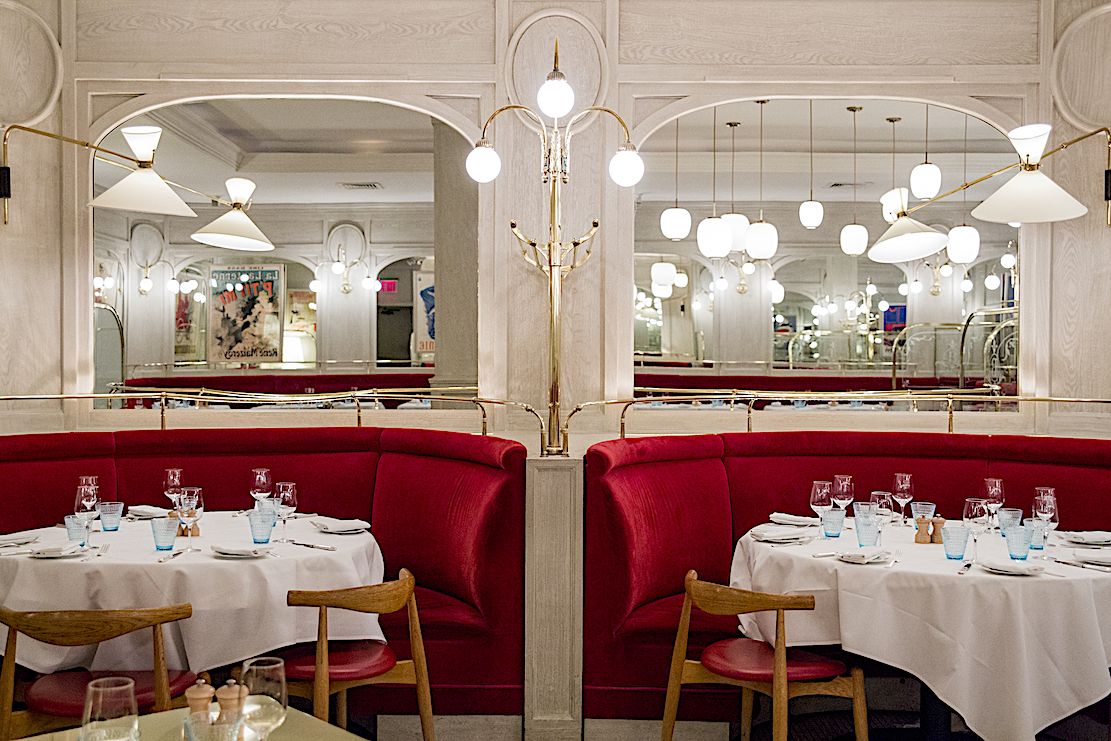
Over
the past decade Benoit has become not only a
bonafide New York bistro with a faithful West
Side and Theater clientele, but over the past
year it has gotten better after a period of
coasting. Never meant to be an adventurous place
to dine, Benoit maintains a menu of French
classics you’ll find at scores of others in New
York or Paris, but Executive Chef Laëtitia
Rouabah (left),
herself a Parisian who previously worked 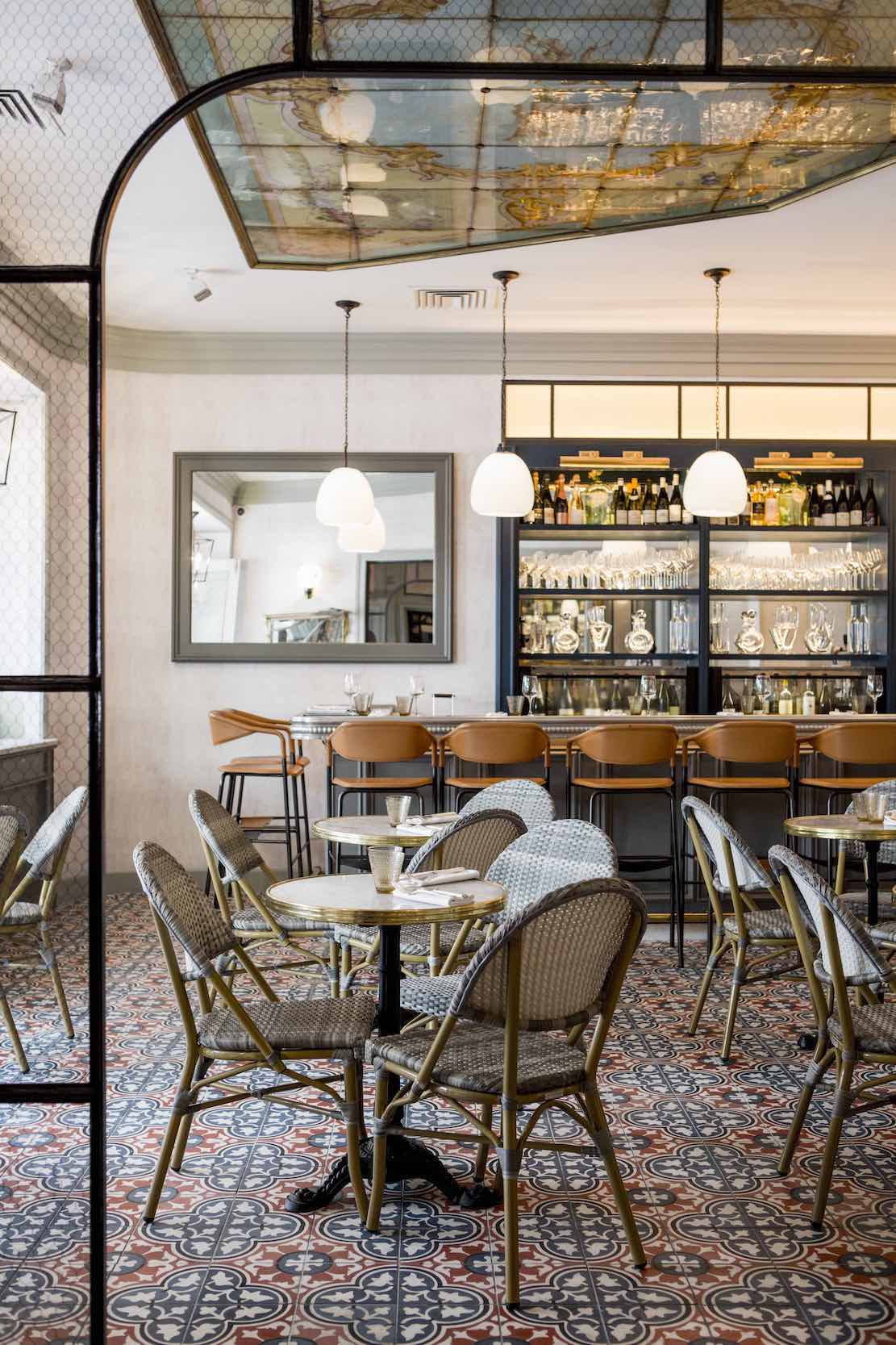 at the
esteemed Allard, has re-affirmed the kitchen’s
strengths and freshened what had become a bit
stale.
at the
esteemed Allard, has re-affirmed the kitchen’s
strengths and freshened what had become a bit
stale.
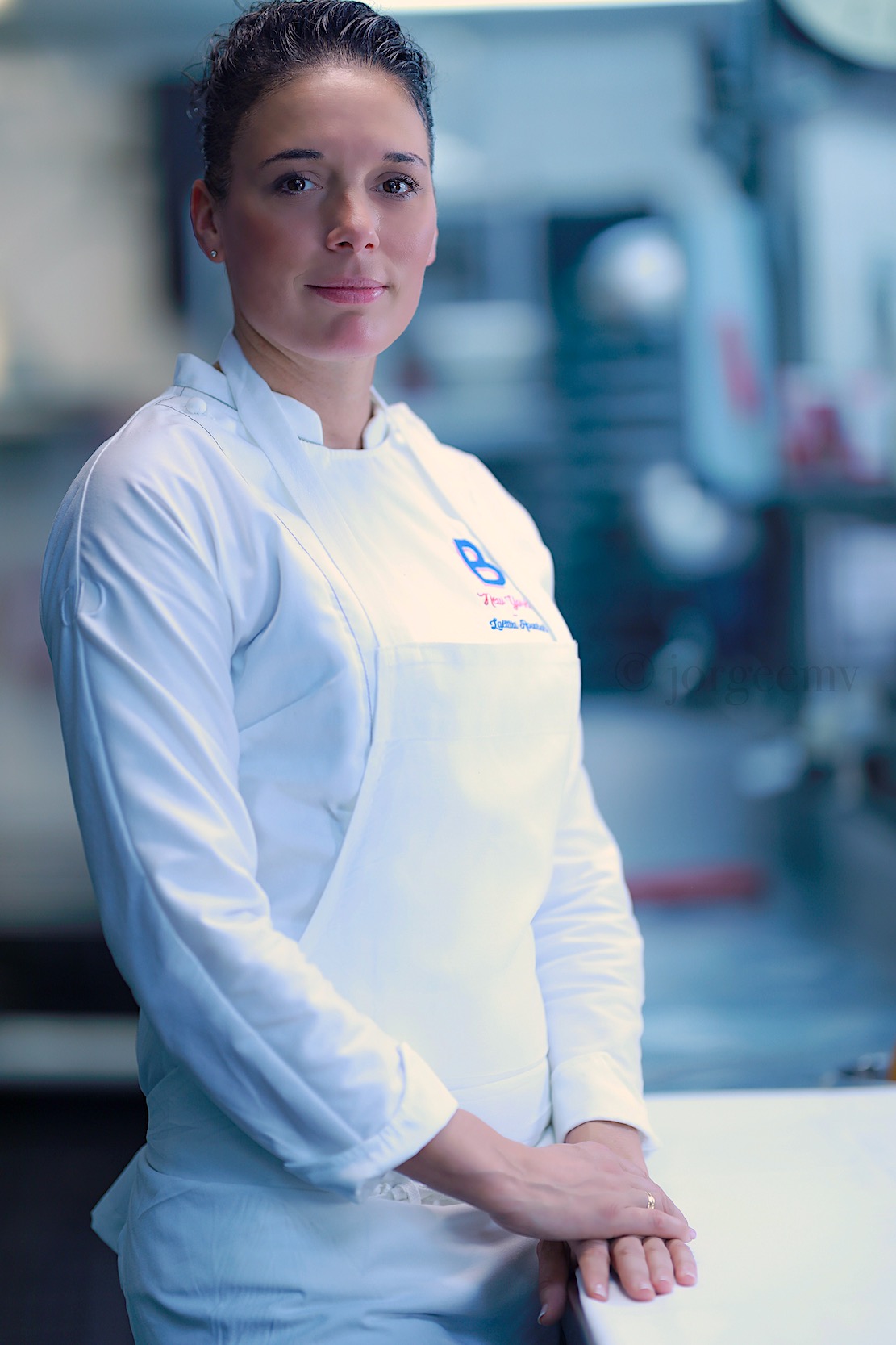 The restaurant falls
under the umbrella of Ducasse Paris, which bases
Benoit NY on the Paris original, opened in 1912 at
20 Rue Saint-Martin, and now with a
branch in Tokyo. Though it never looked
like its Parisian predecessor, Benoit NY used to
be done in a cheery, wood-paneled bistro décor,
complete with trompe l’oeil ceiling clouds, but
two-and-a-half years ago underwent a radical shift
to an all-white paint job, save for the red
banquettes and brass accents. The clouds have
vanished. Most tables have white tablecloths, some
have white-and-gray marble tops, still others
shiny metal. Fortunately, the brightness of the
room has now been moderated (from what the
above photo indicates) to provide a warmer
ambiance. Up front the wine bar and lounge (right) has
become quite glamorous.
The restaurant falls
under the umbrella of Ducasse Paris, which bases
Benoit NY on the Paris original, opened in 1912 at
20 Rue Saint-Martin, and now with a
branch in Tokyo. Though it never looked
like its Parisian predecessor, Benoit NY used to
be done in a cheery, wood-paneled bistro décor,
complete with trompe l’oeil ceiling clouds, but
two-and-a-half years ago underwent a radical shift
to an all-white paint job, save for the red
banquettes and brass accents. The clouds have
vanished. Most tables have white tablecloths, some
have white-and-gray marble tops, still others
shiny metal. Fortunately, the brightness of the
room has now been moderated (from what the
above photo indicates) to provide a warmer
ambiance. Up front the wine bar and lounge (right) has
become quite glamorous.
Service, by a largely French
staff, is swift and very accommodating. There is a
sturdy, short wine list appended to the menu, and
the full list has more than 700 selections.
Rouabah has
kept the classics on Benoit’s menu, like the perfect
onion soup gratinée ($17; below) and
Alsatian tarte flambée ($15; below), and
she’s
brought back the quenelles of pike with sauce
Nantua ($28). Hot, puffy gougères arrive
the 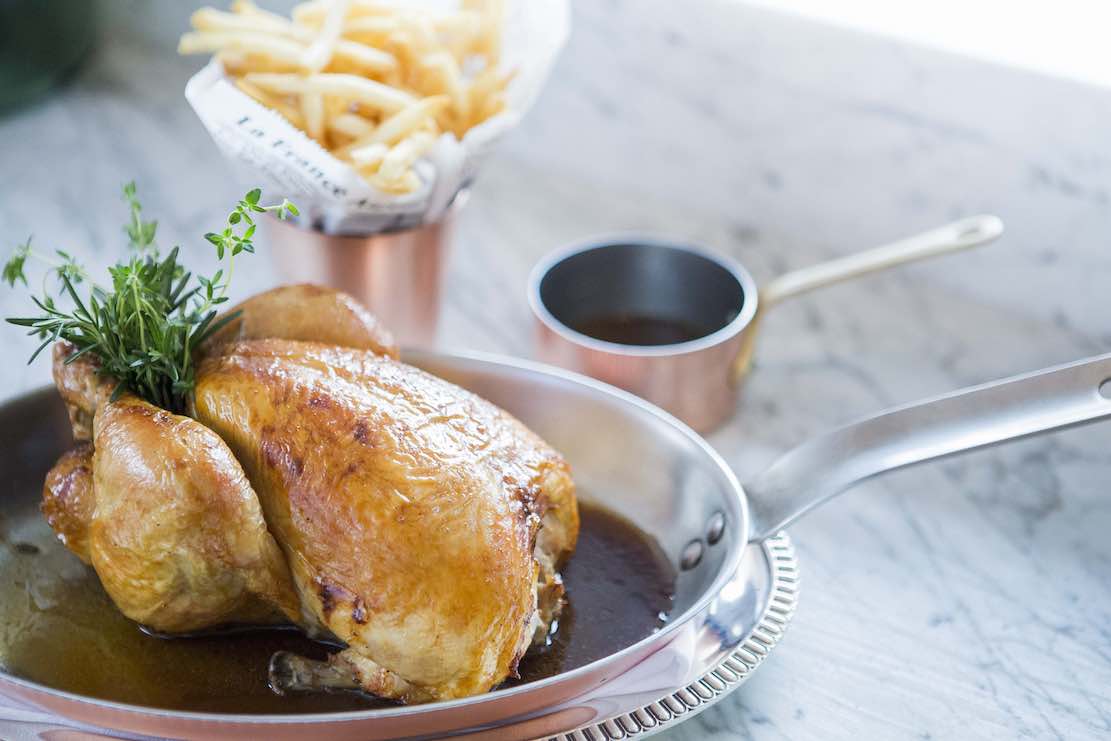 moment you
sit down, and excellent breads and butter follow.
moment you
sit down, and excellent breads and butter follow.
The best approach to the hors
d’oeuvres is to go with an assortment of three
($16) or five ($22) , which include impeccably
rendered pork rillettes,
crispy pig’s trotter with tartar sauce, rabbit porchetta
with mustard and tarragon, roasted smoked eggplant
with peanuts and basil dressing, squid with
chickpeas and more. An order of five can easily be
shared by two or three people.
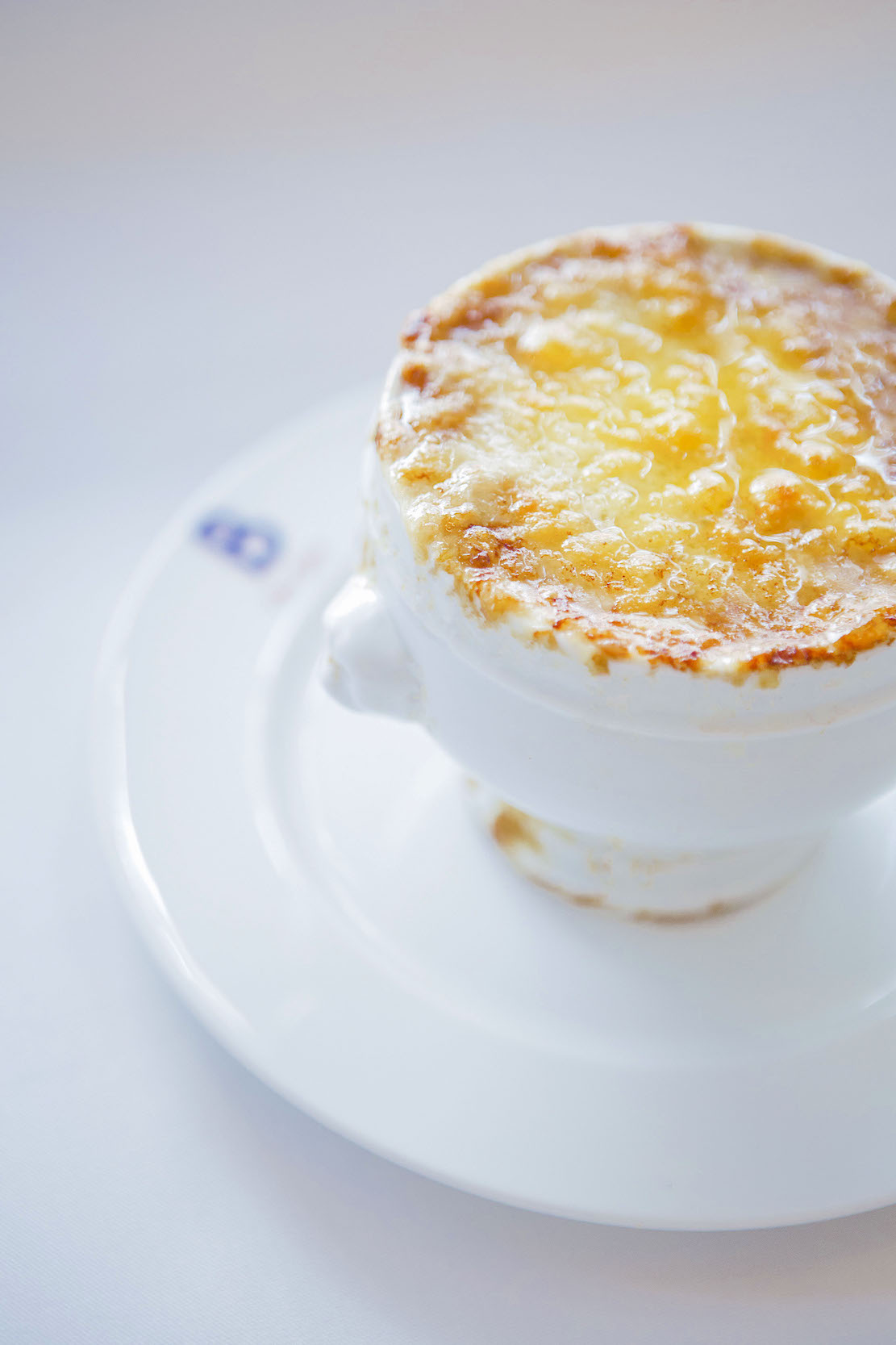 Among first
courses that include the onion soup and tarte flambée
is an excellent duck foie gras terrine with
rhubarb and strawberry with slices of toasted
buttery brioche ($29). There is also a
flakey pâté
en croûte ($20) from a recipe that
dates back to 1892
by Master Chef Lucien Tendret.
Among first
courses that include the onion soup and tarte flambée
is an excellent duck foie gras terrine with
rhubarb and strawberry with slices of toasted
buttery brioche ($29). There is also a
flakey pâté
en croûte ($20) from a recipe that
dates back to 1892
by Master Chef Lucien Tendret.
At the moment, white asparagus
($29) are on the seasonal menu with an
orange-tinged maltaise sauce and Kaluga caviar
(produced in China), which adds nothing but a
fishy taste to the asparagus. The night I had them
the asparagus had little of the sweetness they
have at their best.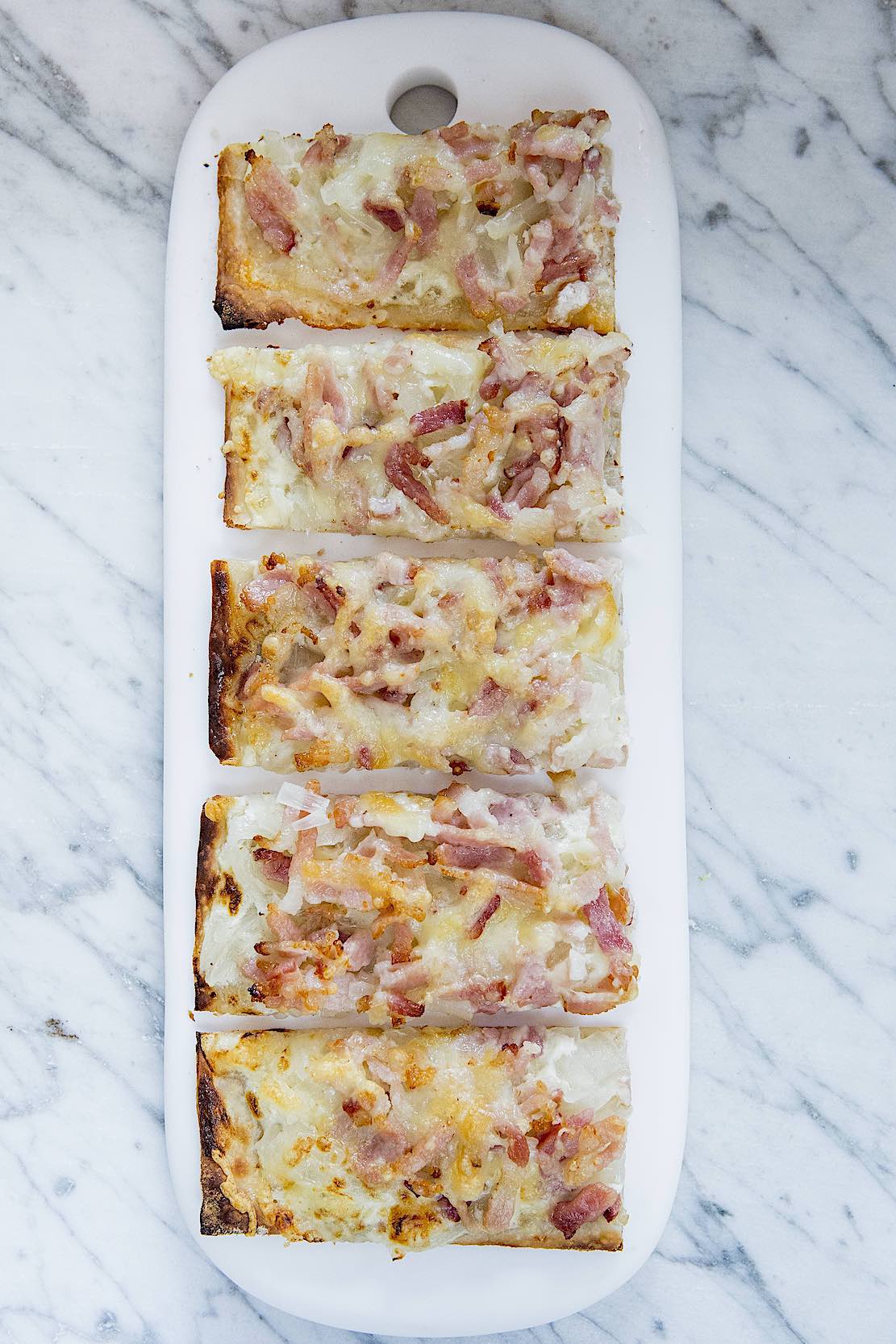
The roast chicken, always a
bistro classic, is now offered for one ($31) or
two ($56), and the single portion is an enormous
platter of juicy, full-flavored chicken that
receives a benediction of buttery
pan juices. Along with it, and some other dishes, come
what may well be New York’s perfect frites,
tasting richly of good potatoes, perfectly crisp
and nice and hot.
Steak frites is not only a good buy at
$37 but, made with skirt steak, has even more
flavor than the usual onglet.
Sweetbreads with vegetable jus is
another generously proportioned dish, though a tad
pricey at $49.
Cheeses at Benoit are kept at
the proper condition and temperature. Currently,
the selection of three ($20) are the rarely seen mothais sur feuille
goat’s cheese, Comté and Fourme d’Ambert, which
may be paired with wines at $18.
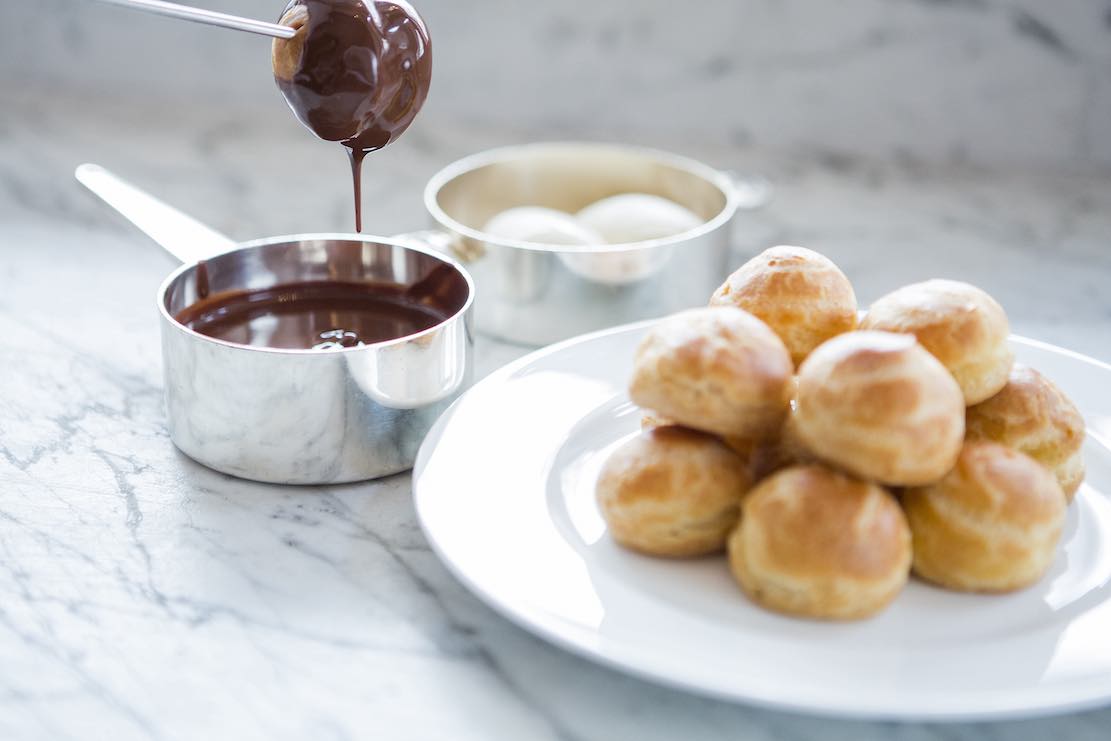 Desserts
have always been a good draw at Benoit—not a bad
idea for after theater or a movie—including a
rummy baba ($12), homey crème caramel ($8),
marvelously composed tarte Tatin to share ($24),
and hot, ice cream-stuffed profiteroles ($22) that
you spike on a fork and dip into a fondue-like hot
chocolate sauce (left).
And you get a whole pile of them.
Desserts
have always been a good draw at Benoit—not a bad
idea for after theater or a movie—including a
rummy baba ($12), homey crème caramel ($8),
marvelously composed tarte Tatin to share ($24),
and hot, ice cream-stuffed profiteroles ($22) that
you spike on a fork and dip into a fondue-like hot
chocolate sauce (left).
And you get a whole pile of them.
Alain Ducasse’s New York
City ventures have come and gone over the years,
but Benoit endures for all the right reasons, and
now, under Chef Rouabah, the cooking is better
than ever, very consistent and full of largess.
Benoit draws all types, from West Siders,
theatergoers, shoppers and nightly solo diners who
set themselves behind a well-set table, ask for
their favorite waiter, nurse a cocktail and order
dishes that they may well take home half of. I do
miss the former woodwork, but Benoit is a very
cheery place deserving of its longevity.
Open daily for lunch and dinner.
❖❖❖
OF VIRGINIA'S WINES
By John Mariani
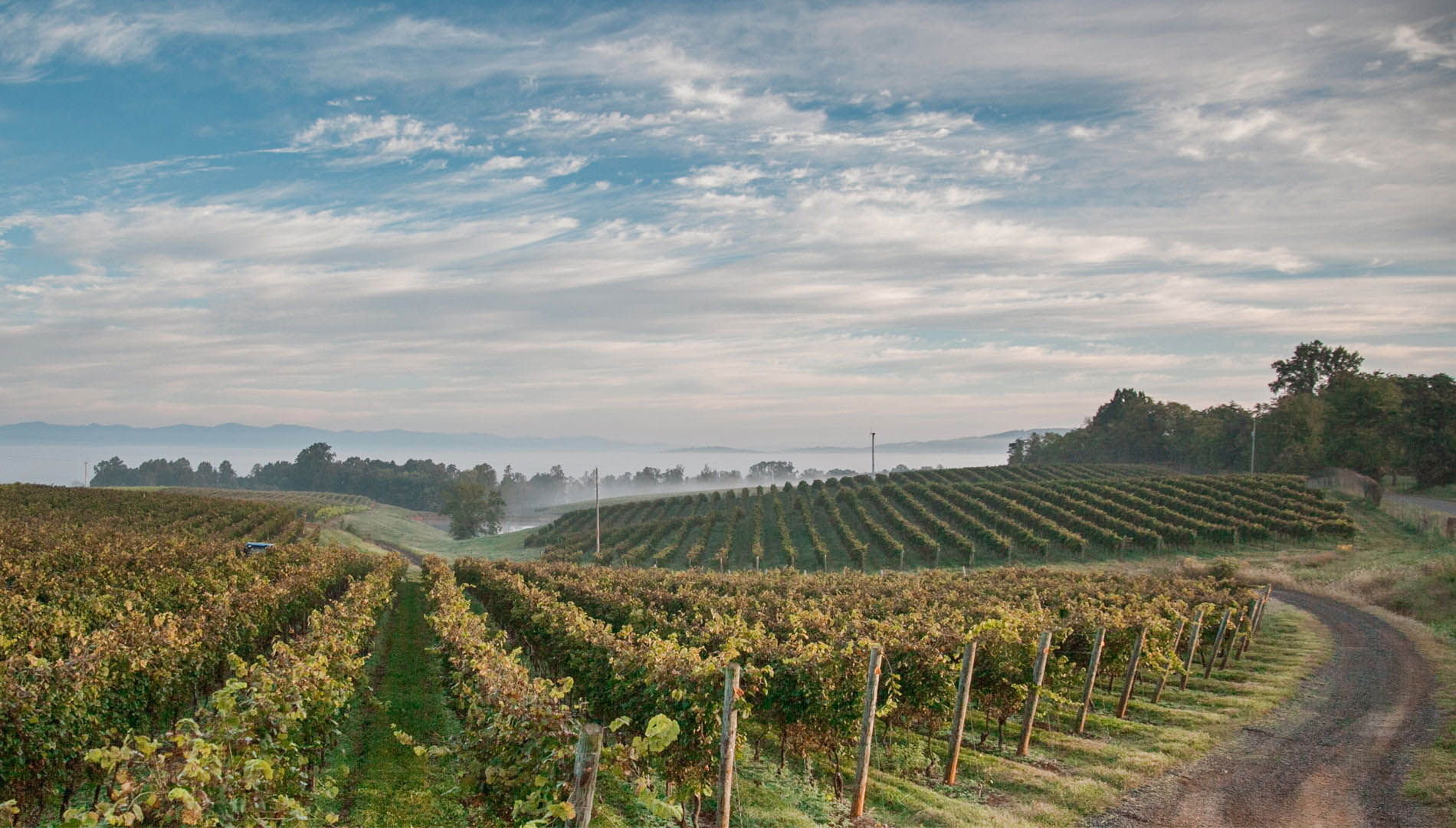
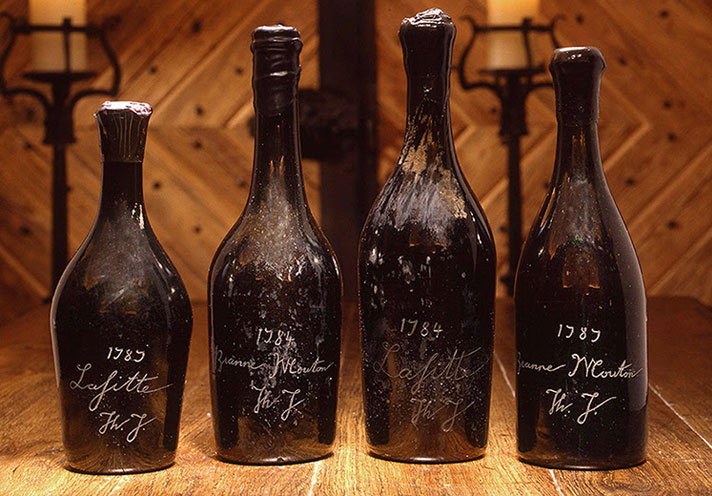 Virginia’s
earliest and most ardent agronomist, Thomas
Jefferson, once said that good wine was “a necessity of
life for me ... and the only
antidote to the bane of whiskey.” But,
while Jefferson did a great
many things very well, he never could
quite get the hang of winemaking at
his Monticello estate. After
decades of experimentation with
European vinifera
grapes, he gave up.
Virginia’s
earliest and most ardent agronomist, Thomas
Jefferson, once said that good wine was “a necessity of
life for me ... and the only
antidote to the bane of whiskey.” But,
while Jefferson did a great
many things very well, he never could
quite get the hang of winemaking at
his Monticello estate. After
decades of experimentation with
European vinifera
grapes, he gave up.
Now, 250 years later, Virginia
winemakers are proving Jefferson’s hunches
were right. Not only are European and hybrid
varietals thriving in Virginia, but the
state’s wine industry is booming. In 1979
Virginia had only six wineries; today there
are 312. Indigenous grapes were always grown
in Virginia, even before Europeans arrived in
the 16th century, though the pungent, foxy
native labrusca
varietals generally made poor or cloying wine.
Those wineries that persisted were forced to
close during Prohibition, so only since World
War II have there been innovative attempts to
grow vinifera
in the state.
Not until the 1990s were major
investments made in the region, at a time when
many dot.com millionaires sought to invest in
vineyards when Napa Valley acreage was selling
for $100,000, while prime vineyard land in
Virginia was going for $10,000-$15,000. 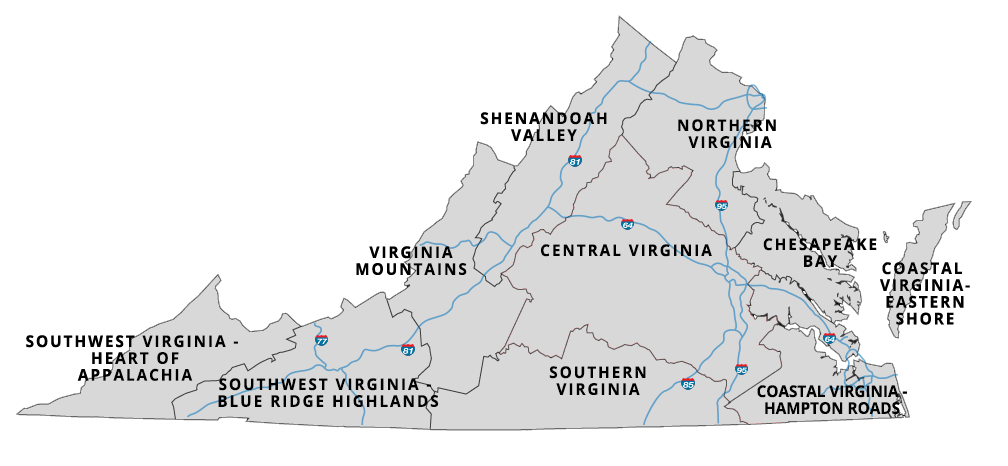
On a recent three-day trip
to Virginia, I found creditable reason to
believe Virginia will rank with California,
Oregon and New York as a high-quality wine
region. Just two weeks ago Horton Vineyards in
Gordonsville won the Wine of the Year award at
the Governor’s Cup in Richmond for a rare
varietal named Manseng ($25). Horton also
makes unusual varietals, including Rkatsitelli
($20), Vidal Blanc ($16), Norton ($18), and
Touriga ($25), and an array of fruit wines
made from apples and pears.
One of last century’s
pioneers was the giant Italian wine company
Zonin, which in 1976 bought Barboursville
Vineyards on what was once the plantation of
Gov. James Barbour, for whom Thomas Jefferson
had designed the property’s mansion. Today
Barboursville’s winemaker is a Piedmontese
named Luca Paschina (below),
considered one of the innovators of Virginia
wine. His insistence that Cabernet Franc,
first planted in 1978, 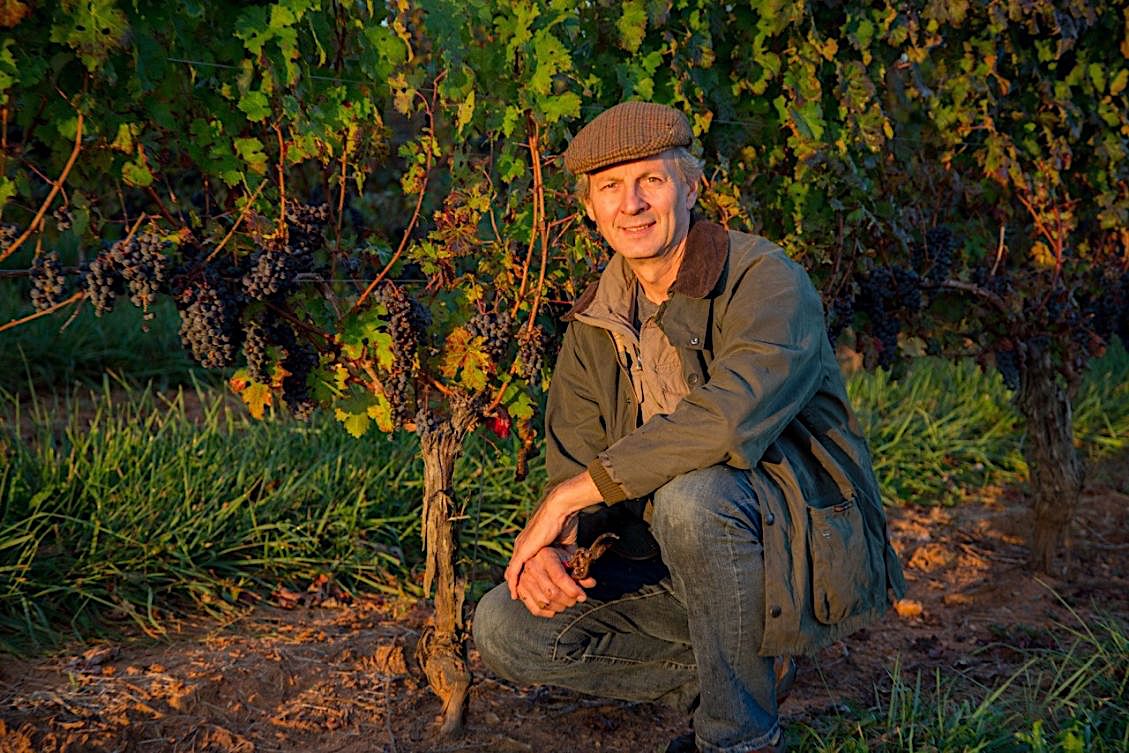 was the
ideal wine for the region’s terroir helped
make it one of Virginia’s most notable
varietals.
was the
ideal wine for the region’s terroir helped
make it one of Virginia’s most notable
varietals.
In addition, Paschina’s
wines are based on traditional European red
grapes like Merlot and Petit Verdot, as well
as white wine grapes like Viognier—which has
proved very popular among Virginia
wineries—and Vermentino. This last, undergoing
extended maceration, has surprised many for
its longevity and maturation over three years.
Barboursville’s
flagship wine is called Octagon, named to
celebrate the estate’s connections to
Jefferson, who designed an octagon drawing
room for Gov. Barbour. First produced in 2001
and made from Merlot, Cabernet Franc and,
usually, Petit Verdot, it is a very rich but
very complex wine, closer to a Pomerol than a
big California bombshell.
Throughout my time in
Virginia, drinking only Virginia wines, I was
impressed by how many were of a quality that
would rank with wines from Europe, California,
Oregon and South America. Many, however, were
one-dimensional and others were slightly
sweet, a style that remains popular among
consumers in the region.
Glen Manor Vineyards,
spread over six acres of rocky soil high up in
the Blue Ridge Mountains, began in 1995, and
its most recent vintages of Petit Verdot have
been very good. 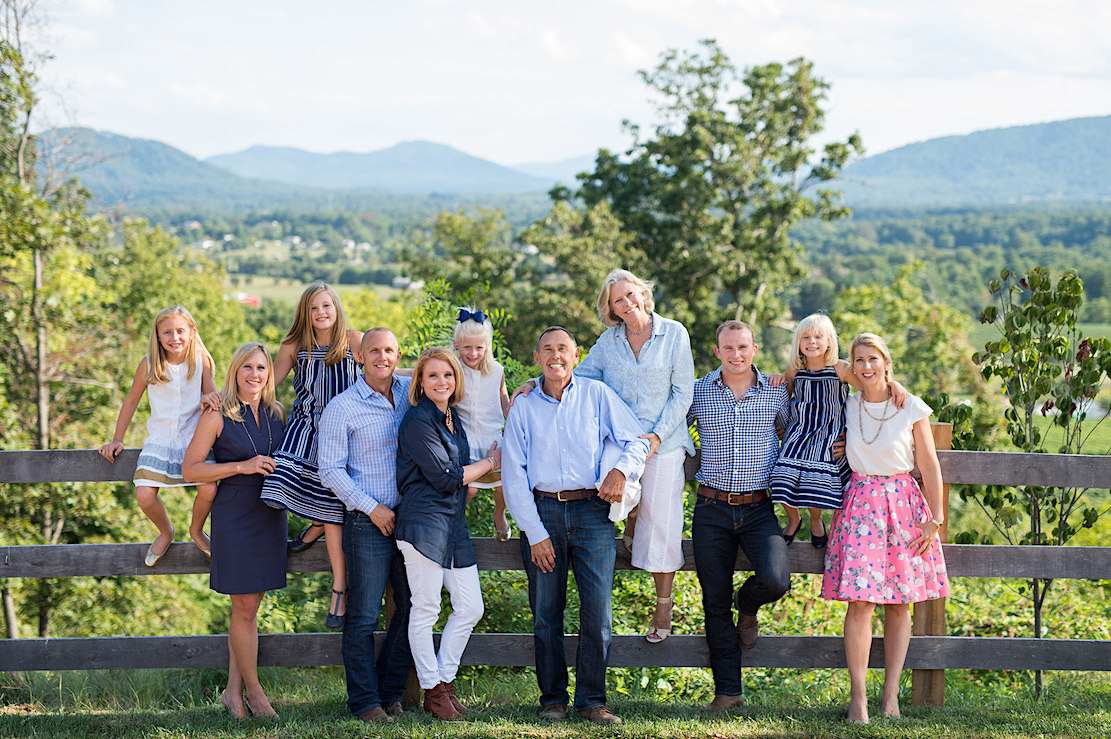
Other wines I thoroughly
enjoyed included King Family Vineyards
Small Batch Series Skin Contact Viognier 2015;
Veritas Viognier 2017; Blenheim: Chardonnay
2017; Chatham Vineyards Chardonnay 2017; Early
Mountain Vineyards Petit Manseng 2017; Veritas
Petit Verdot 2016; Blenheim Vineyards Petit
Verdot 2017; Early Mountain Vineyards Quaker
Run Cabernet Franc 2016; King Family Vineyards
Meritage 2015; and Rosemont: Kilravock 2013. All
these were tasted with a dinner at The
Farmhouse at Veritas Winery (see
article above).
Veritas is a big family
operation, begun in 1999 by Andrew and
Patricia Hodson, who left other careers to
become winery owners, producing their first
vintage in 2001. Today their daughters Emily
and Chloe and other siblings are very much
involved in the operation of both the vineyard
and The Farmhouse.
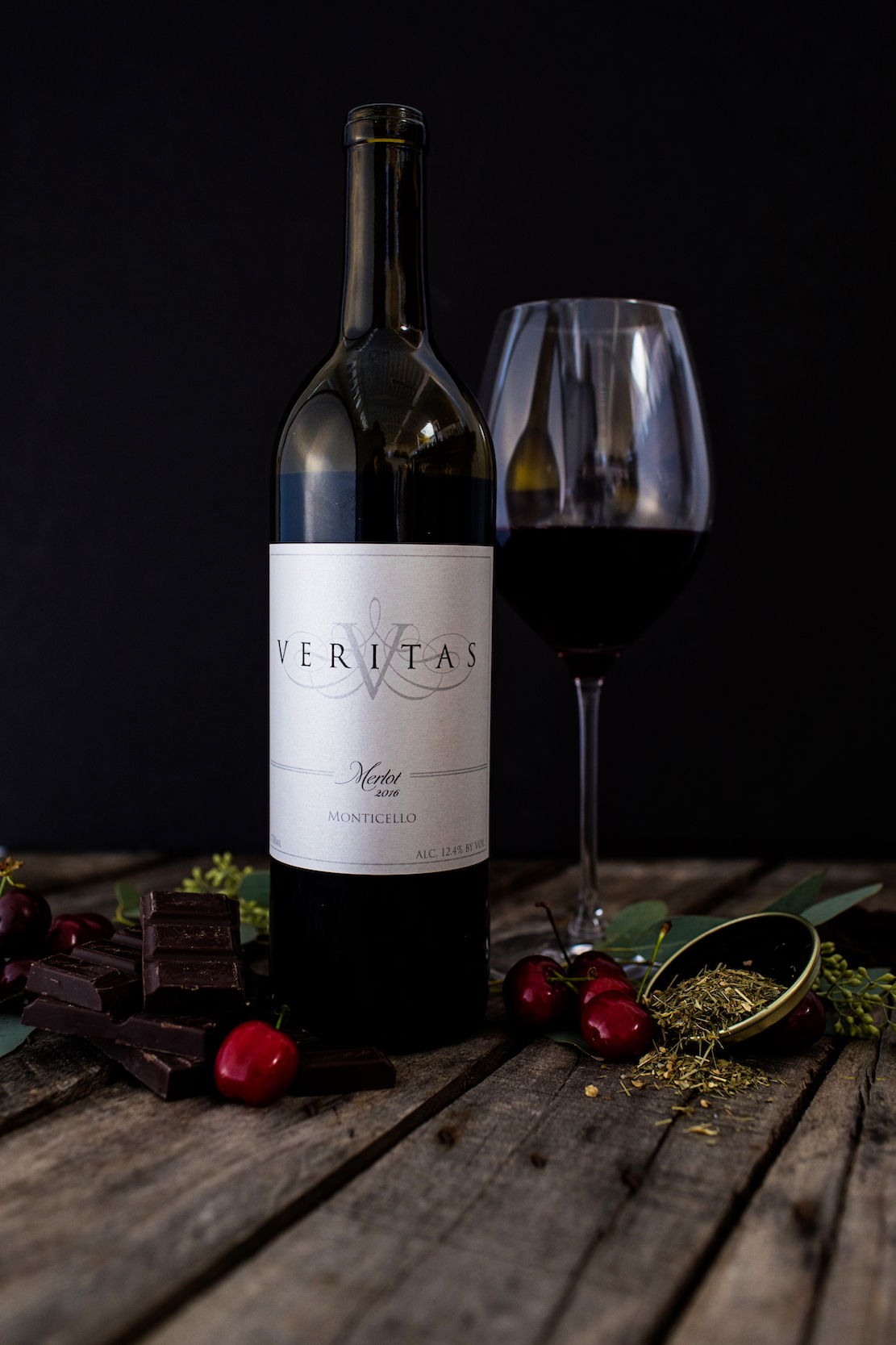
During that
dinner I suggested that Virginia’s wineries
may be trying too hard to test too many
varietals at once, rather than improving a
smaller number over the years. The spirited
rebuttal I received was that experimentation
is something the wineries can afford to do in
this, the pioneering stage of the state’s
viticultural development.
However,
because the overwhelming majority of
its wines, made in small production, are
sold within the state, the
problem is that little is exported, meaning
they have not developed a reputation beyond
the state’s border.
I suspect that in the
future those many varietal options will narrow
and the estates will gain better focus on
producing world-class wines based on the very
best varietals that find their best terroir in
a state where grapes are grown in the Central, Northern,
Southern, and Eastern regions, as well as
the Shenandoah Valley and Blue Ridge
Mountains.
❖❖❖
OR AS IMMANUEL KANT ONCE PUT IT, "ONE WHO MAKES HIMSELF
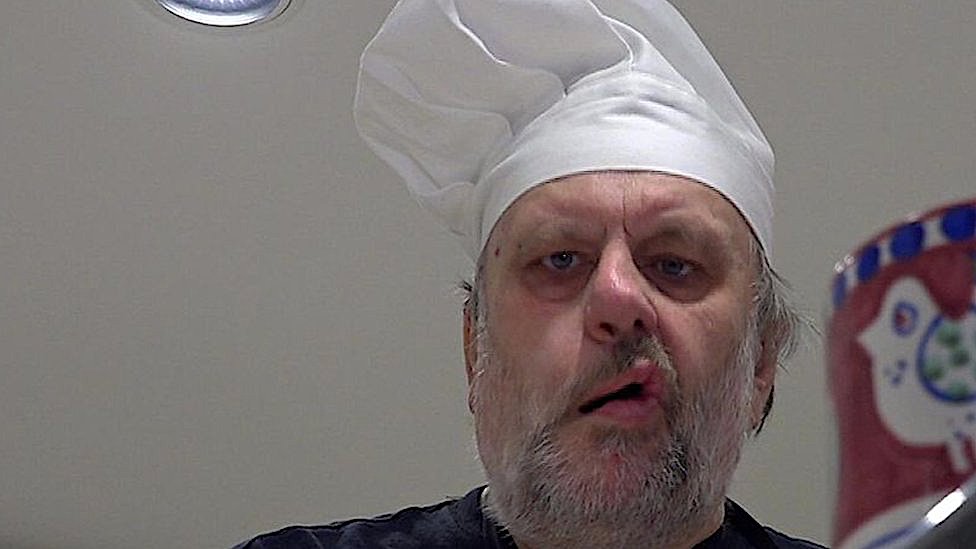
A WORM CANNOT COMPLAIN AFTERWARDS IF PEOPLE STEP ON HIM."
"As I write this, I’m reminded of
something Slovenian Marxist philosopher Slavoj Zizek (right) said when he
addressed the Occupy Wall Street movement in 2011.
‛Don’t fall in love with yourselves,' he shouted into
the crowd gathered in New York’s Zuccotti Park."—Soleil
Ho, "The Fantasy—and reality—of dining at Chez Panisse,"
San Francisco
Chronicle (2/28/19).
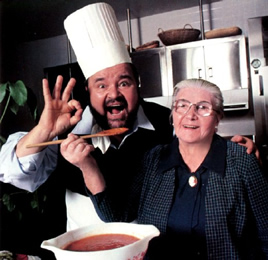
OR YOU COULD JUST BUY CHEF BOY-ARDEE
AND SAVE YOURSELF THE TROUBLE OF
OVERCOOKING THE SPAGHETTI
EATALY’s recipe for a classic spaghetti dish is to 1.
Boil spaghetti for 11 minutes, 2. open up a jar of
tomatoes EATALY sells, 3. heat in pan, 4. Add
spaghetti.
❖❖❖
Wine
Column Sponsored by Banfi Vintners
SANGIOVESE
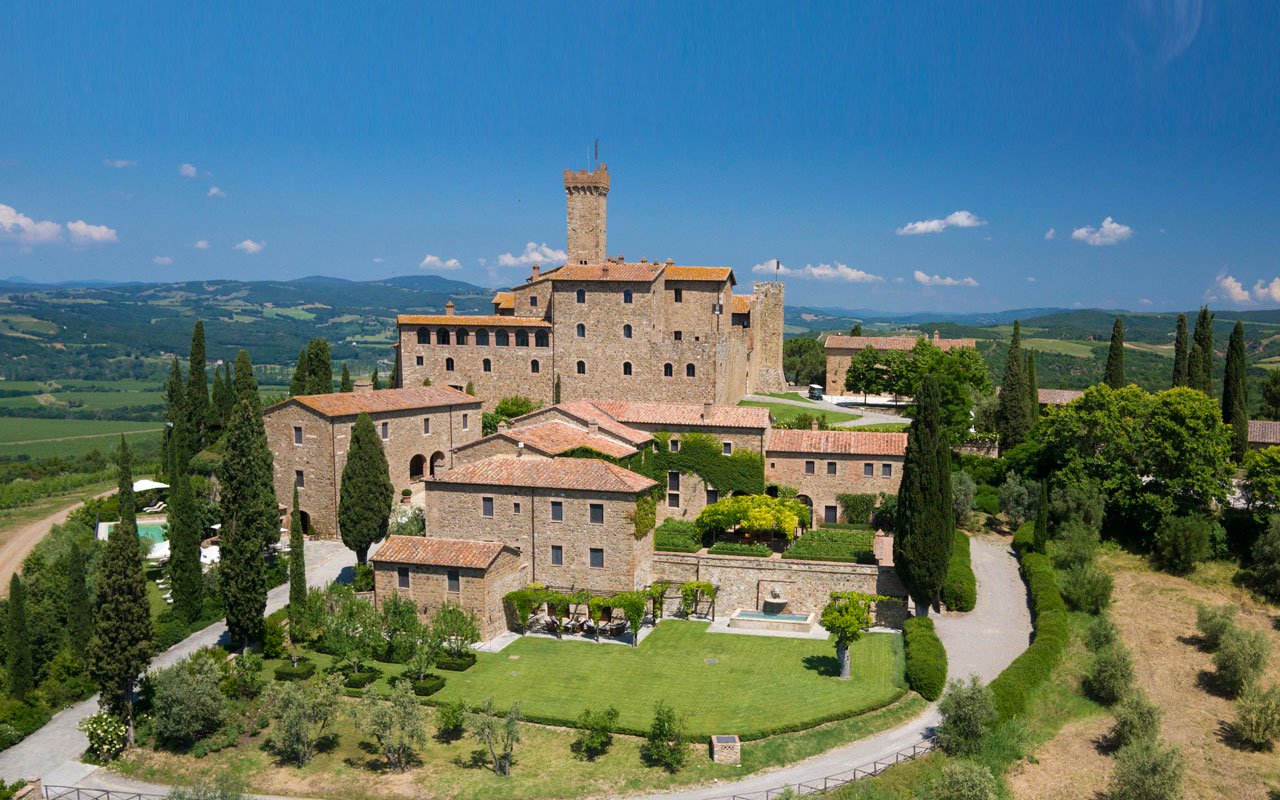 Wine is a joy year-round but
in cooler weather one
grape varietal has really taken center stage in
my daily activities – that most Italian of
grapes, Sangiovese, and its ultimate expression
– Brunello di Montalcino.
Wine is a joy year-round but
in cooler weather one
grape varietal has really taken center stage in
my daily activities – that most Italian of
grapes, Sangiovese, and its ultimate expression
– Brunello di Montalcino.
From mid-September through mid-October,
the Sangiovese grown for our various styles of red
wines are be harvested, culminating with the top
selection for Brunello di Montalcino.
Second, cooler weather here means
it is time to start enjoying more red wines and
especially Sangiovese based wines. That
includes Banfi’s cru of Brunello, Poggio alle Mura,
literally the cream of the crop of our Sangiovese
vineyards. Alongside our Poggio alle Mura Brunello di
Montalcino, this year we introduced two more wines
from the cru Poggio alle Mura – a Rosso di Montalcino
and a Riserva of Brunello. Rosso is sort of like the
younger brother of Brunello, also made from 100%
Sangiovese grapes but usually a selection from younger
vines and the wine is aged only two years compared to
the four required for Brunello. The
Riserva, on the other hand, is an even more selective
harvest of Sangiovese, and ages for an additional year
before release.
What is so special about this cru
Poggio alle Mura?
Well, it is the result our over 30 years of
ongoing research at my family’s vineyard estate,
Castello Banfi.
When we first began planting our vines there in
the late 1970s studies from the University of Bordeaux
indicated which strains of many varietals we should
plant, based on the soil type and microclimate of each
vineyard. But
when it came to the region’s native Sangiovese, there
was only local lore, no scientific research. So we took
it upon ourselves to figure out this vine, and set off
on three decades of incredibly detailed research.
We started
with 600 apparent variations on Sangiovese, because it
is so susceptible to variations in weather and soil,
and narrowed that down to 160 truly genetically
different clones.
We planted a vineyard with two rows of each
type, made wine from each of them, and charted the
differences – remember, you only get one chance a year
to make wine, so this took time.
It took about ten years to get some
concrete results, though we continue to experiment
today and always will – you never stop learning in
science and nature!
Once we determined which were the best,
complementary clones that could be planted together to
make the best Brunello, we chose to plant them in what
we determined to be the optimal vineyard sites. Coincidentally,
the best soils and climate conditions are in the
slopes surrounding the medieval fortress today known
as Castello Banfi, known since Etruscan times as
Poggio alle Mura – the walled hilltop. Hence the
name of our most special “cru” of Brunello,
representing a synthesis between tradition and
innovation.
Though the focus of this study was
our Brunello, all of our Sangiovese-based wines,
including the super Tuscans SummuS, Cum Laude, and
Centine, benefitted from this work. And that’s
the third reason for celebrating Sangiovese this
month, for the range of wonderful reds that usher us
into autumn! One
wine in particular was inspired by our research – the
BelnerO, a Sangiovese dominant blend with what I like
to call a kiss of Cabernet and a whisper of Merlot. We grow the
grapes a little differently for BelnerO than for
Brunello, make the wine with less oak aging and
released it earlier from the winery, providing a
counterpoint to Brunello and a lovely terroir-driven
wine in its own right.
If you
know Italians, you know that by nature we are
multi-faceted, varying in mood, and always passionate. As a
nation, we span from the hot sunny beaches of Sicily
near the African coast to the rugged mountains and
Alpine ski slopes of Trentino-Alto Adige in the north. Sangiovese
is grown in almost all of Italy’s regions and reflects
the unique nature of each; it is most famous
(rightfully so) in Tuscany, yet even there it reflects
the nuances of each hilltop, valley and subzone. It has
something a little different to say in Brunello than
Chianti, Morellino than Vino Nobile di Montepulciano,
Rosso di Montalcino than Super Tuscan blends.
Here is a smattering of
Sangiovese-based wines that you may wish to get to
know better, reflecting a spectrum that appeals to
every occasion, every taste, and every budget. We can
assure you that the conversation will never become
boring. 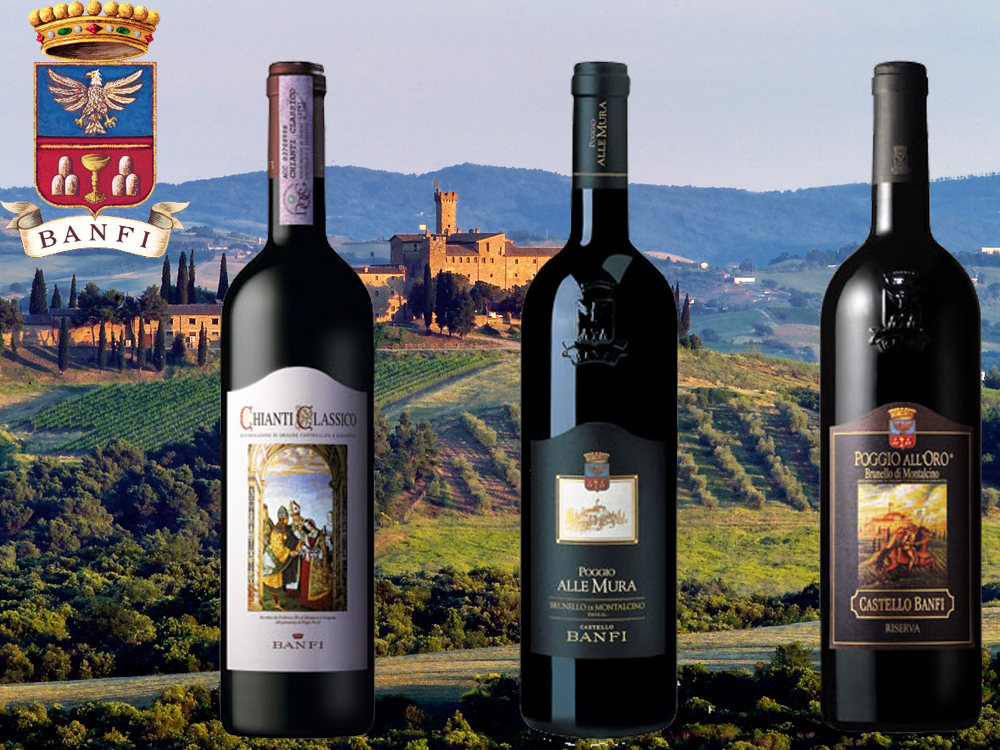
Recommendations for Celebrating
Sangiovese
BelnerO Proprietor’s Reserve Sangiovese
– A refined
cuvée of noble red grapes perfected by our pioneering
clonal research. This dark beauty, BelnerO, is
produced at our innovative winery, chosen 11
consecutive years as Italy’s Premier Vineyard Estate.
Fermented in our patented temperature controlled
French oak and aged approximately 2 additional years.
Unfiltered, and Nitrogen bottled to minimize sulfites.
Castello Banfi Brunello di Montalcino –
Rich, round, velvety and intensely
aromatic, with flavor hints of licorice, cherry, and
spices. Brunello di Montalcino possesses an intense
ruby-red color, and a depth, complexity and opulence
that is softened by an elegant, lingering aftertaste.
Unfiltered after 1998 vintage.
Castello Banfi Rosso di Montalcino – Brunello's "younger brother," produced
from select Sangiovese grapes and aged in barrique for
10 to 12 months. Deep ruby-red, elegant, vibrant,
well-balanced and stylish with a dry velvety
finish.
Poggio all’Oro Brunello di Montalcino
Riserva – A single vineyard selection of our most
historically outstanding Sangiovese, aged five years
before release, the additional year more than that
required of Brunello including 6 months in barrel and
6 months more in bottle to grant its “Riserva”
designation. Incredible
elegance and harmony. Intense with lots of fruit and
subtle wood influence. Round, complete, well balanced
with hints of chocolate and berries. Unfiltered after
1998.
Poggio alle Mura – The first tangible result of years of
intensive clonal research on Montalcino’s native
Sangiovese grape.
Estate bottled from the splendidly sun drenched
vineyards surrounding the medieval Castello from which
it takes its name.
The Brunello
di Montalcino is seductive, silky and smoky. Deep ruby
in color with an expressive bouquet of violets, fruits
and berries as well as cigar box, cedar and exotic
spices. The Rosso
di Montalcino is also intense ruby red. The bouquet
is fresh and fruity with typical varietal notes of
cherry and blackberry, enriched by more complex hints
of licorice, tobacco and hazelnut. It is full
bodied, yet with a soft structure, and a surprisingly
long finish. The Poggio alle Mura Brunello di Montalcino
Riserva is deep ruby red with garnet
reflections and a rich, ample bouquet that hints of
prune jam, coffee, cacao and a light balsamic note. It is full
and powerful, with ripe and gentle tannins that make
it velvety and harmonious; this wine is supported by a
pleasing minerality that to me speaks soundly of that
special hillside in southern Montalcino.
SummuS – A wine of towering elegance, SummuS is an
extraordinary blend of Sangiovese which contributes
body; Cabernet Sauvignon for fruit and structure; and
Syrah for elegance, character and a fruity bouquet. An elegant,
complex and harmonious red wine.
Cum Laude – A complex and elegant red which graduated
“With Honors,” characterized by aromas of juicy
berries and fresh spices.
Centine – A Cuvee that is more than half
Sangiovese, the balanced consisting of equal parts of
Cabernet Sauvignon and Merlot. Vinified in
a firm, round style that easily accompanies a wide
range of dishes, this is a smooth and fragrantly
satisfying wine with international character, and a
perennial favorite at my own dinner table.
Banfi Chianti Superiore – The “Superiore” designation signifies
stricter government regulations regarding production
and aging requirements, as compared to regular
Chianti. An
intense ruby red wine with fruit forward aromas and
floral notes. This
is a round wine with well-balanced acidity and fruit.
Banfi Chianti Classico – An enduring classic: alluring
bouquet of black fruit and violets; rich flavors of
cherry and leather; supple tannins and good acidity
for dining.
Banfi Chianti Classico Riserva – Produced from select grapes grown in the
"Classico" region of Chianti, this dry, fruity and
well-balanced red has a full bouquet reminiscent of
violets.
Fonte alla Selva Chianti Classico – This is our newest entry into the Chianti
arena, coming from a 99 acre estate in Castellina, the
heart of the Chianti Classico region. The wine is
a captivating mauve red that smells of cherry, plum
and blackberry with hints of spice. It is
round, full and balanced with very good
acidity.
Col di Sasso – Sangiovese and Cabernet Sauvignon. Luscious,
complex and soft with persistent notes of fruit and
great Italian style structure.
Any of John Mariani's books below may be ordered from amazon.com.
 The Hound in Heaven
(21st Century Lion Books) is a novella, and
for anyone who loves dogs, Christmas, romance,
inspiration, even the supernatural, I hope you'll find
this to be a treasured favorite. The story
concerns how, after a New England teacher, his wife and
their two daughters adopt a stray puppy found in their
barn in northern Maine, their lives seem full of promise.
But when tragedy strikes, their wonderful dog Lazarus and
the spirit of Christmas are the only things that may bring
his master back from the edge of despair.
The Hound in Heaven
(21st Century Lion Books) is a novella, and
for anyone who loves dogs, Christmas, romance,
inspiration, even the supernatural, I hope you'll find
this to be a treasured favorite. The story
concerns how, after a New England teacher, his wife and
their two daughters adopt a stray puppy found in their
barn in northern Maine, their lives seem full of promise.
But when tragedy strikes, their wonderful dog Lazarus and
the spirit of Christmas are the only things that may bring
his master back from the edge of despair. WATCH THE VIDEO!
“What a huge surprise turn this story took! I was completely stunned! I truly enjoyed this book and its message.” – Actress Ali MacGraw
“He had me at Page One. The amount of heart, human insight, soul searching, and deft literary strength that John Mariani pours into this airtight novella is vertigo-inducing. Perhaps ‘wow’ would be the best comment.” – James Dalessandro, author of Bohemian Heart and 1906.
“John Mariani’s Hound in Heaven starts with a well-painted portrayal of an American family, along with the requisite dog. A surprise event flips the action of the novel and captures us for a voyage leading to a hopeful and heart-warming message. A page turning, one sitting read, it’s the perfect antidote for the winter and promotion of holiday celebration.” – Ann Pearlman, author of The Christmas Cookie Club and A Gift for my Sister.
“John Mariani’s concise, achingly beautiful novella pulls a literary rabbit out of a hat – a mash-up of the cosmic and the intimate, the tragic and the heart-warming – a Christmas tale for all ages, and all faiths. Read it to your children, read it to yourself… but read it. Early and often. Highly recommended.” – Jay Bonansinga, New York Times bestselling author of Pinkerton’s War, The Sinking of The Eastland, and The Walking Dead: The Road To Woodbury.
“Amazing things happen when you open your heart to an animal. The Hound in Heaven delivers a powerful story of healing that is forged in the spiritual relationship between a man and his best friend. The book brings a message of hope that can enrich our images of family, love, and loss.” – Dr. Barbara Royal, author of The Royal Treatment.
 |
The Encyclopedia of American Food and Drink by John F. Mariani (Bloomsbury USA, $35) Modesty forbids me to praise my own new book, but let me proudly say that it is an extensive revision of the 4th edition that appeared more than a decade ago, before locavores, molecular cuisine, modernist cuisine, the Food Network and so much more, now included. Word origins have been completely updated, as have per capita consumption and production stats. Most important, for the first time since publication in the 1980s, the book includes more than 100 biographies of Americans who have changed the way we cook, eat and drink -- from Fannie Farmer and Julia Child to Robert Mondavi and Thomas Keller. "This book is amazing! It has entries for everything from `abalone' to `zwieback,' plus more than 500 recipes for classic American dishes and drinks."--Devra First, The Boston Globe. "Much needed in any kitchen library."--Bon Appetit. |
"Eating Italian will never be the same after reading John Mariani's entertaining and savory gastronomical history of the cuisine of Italy and how it won over appetites worldwide. . . . This book is such a tasteful narrative that it will literally make you hungry for Italian food and arouse your appetite for gastronomical history."--Don Oldenburg, USA Today. "Italian
restaurants--some good, some glitzy--far
outnumber their French rivals. Many of
these establishments are zestfully described
in How Italian Food Conquered the World, an
entertaining and fact-filled chronicle by
food-and-wine correspondent John F.
Mariani."--Aram Bakshian Jr., Wall Street
Journal.
"Equal parts
history, sociology, gastronomy, and just
plain fun, How Italian Food Conquered the
World tells the captivating and delicious
story of the (let's face it) everybody's
favorite cuisine with clarity, verve and
more than one surprise."--Colman Andrews,
editorial director of The Daily
Meal.com. "A fantastic and fascinating
read, covering everything from the influence
of Venice's spice trade to the impact of
Italian immigrants in America and the
evolution of alta cucina. This book will
serve as a terrific resource to anyone
interested in the real story of Italian
food."--Mary Ann Esposito, host of PBS-TV's
Ciao
Italia. "John Mariani has written the
definitive history of how Italians won their
way into our hearts, minds, and
stomachs. It's a story of pleasure over
pomp and taste over technique."--Danny Meyer,
owner of NYC restaurants Union Square
Cafe, The Modern, and Maialino.
|
 |
 |
 |
 |
 |
 |
 |
 |
 Everett Potter's Travel Report:
Everett Potter's Travel Report: 
 Eating Las Vegas
JOHN CURTAS has been covering the Las Vegas
food and restaurant scene since 1995. He is
the co-author of EATING LAS VEGAS – The 50
Essential Restaurants (as well as
the author of the Eating Las Vegas web site: www.eatinglasvegas.
He can also be seen every Friday morning as
the “resident foodie” for Wake Up With the
Wagners on KSNV TV (NBC) Channel 3 in
Las Vegas.
Eating Las Vegas
JOHN CURTAS has been covering the Las Vegas
food and restaurant scene since 1995. He is
the co-author of EATING LAS VEGAS – The 50
Essential Restaurants (as well as
the author of the Eating Las Vegas web site: www.eatinglasvegas.
He can also be seen every Friday morning as
the “resident foodie” for Wake Up With the
Wagners on KSNV TV (NBC) Channel 3 in
Las Vegas.
MARIANI'S VIRTUAL GOURMET
NEWSLETTER is published weekly. Publisher: John Mariani. Editor: Walter Bagley. Contributing Writers: Christopher Mariani,
Robert Mariani, Misha Mariani, John A. Curtas, Gerry Dawes, Geoff Kalish,
and Brian Freedman. Contributing
Photographer: Galina Dargery. Technical
Advisor: Gerry
McLoughlin.
If you wish to subscribe to this
newsletter, please click here: http://www.johnmariani.com/subscribe/index.html
© copyright John Mariani 2019

